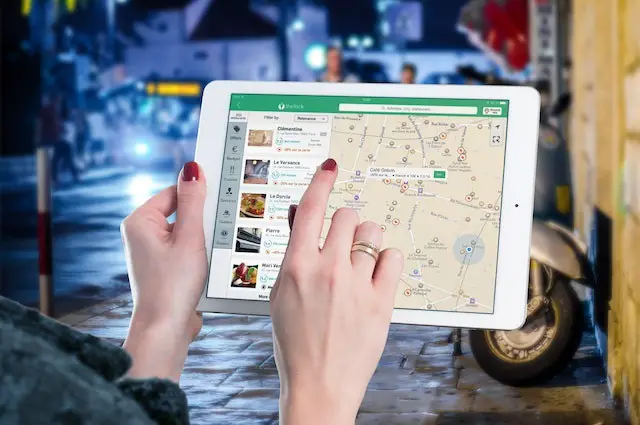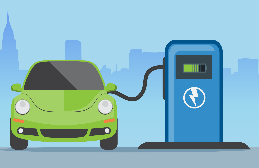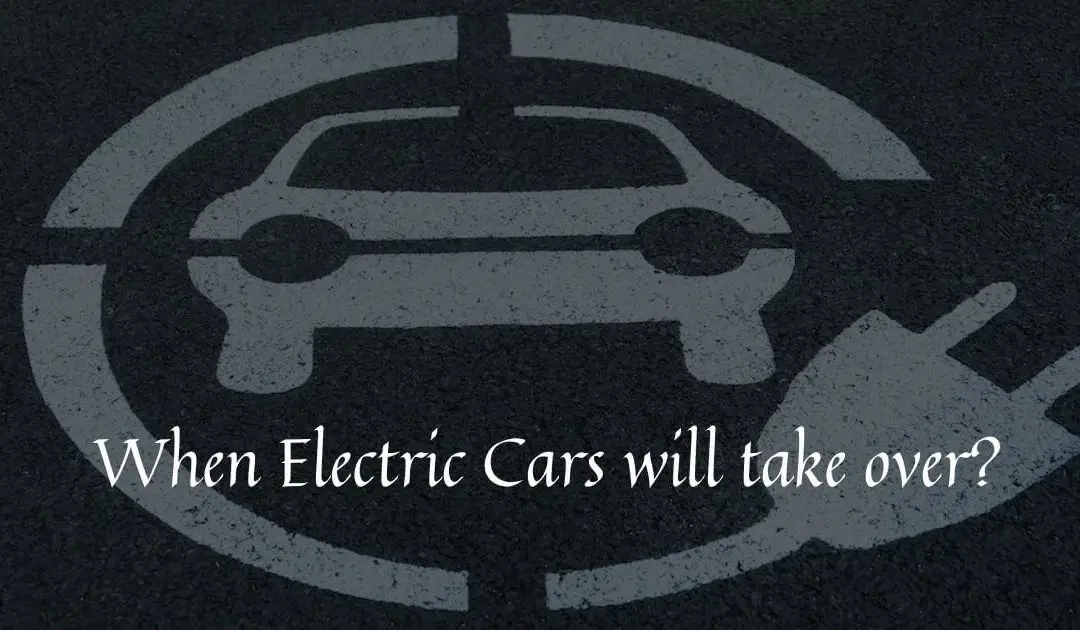The demand for electric cars continuously growing year-to-year. So, one question comes to mind, when electric cars will take over gasoline-driven cars?
Electric vehicles will sooner take over than we think.
Many governments around the world declared their net-zero carbon ambition deadline and set targets to ban the sale of petrol & diesel engine vehicles.
The governments also give incentives to promote electric vehicles.
On the same line, the car-making companies also declared their deadline like Jaguar plans to sell only electric cars from 2025, Volvo from 2030, Lotus from 2028, GM Motors from 2030, and VW plans to 70% only electric by 2030.
To surpass gasoline-driven cars, electric cars have to cover a long mile because the sustainability of electric cars depends on a lot of other factors which we will discuss here.
Suppose you are planning to own an electric car in the coming months then what types of questions will come to your mind before owning it?
The first question may be how to do the installation of an electric vehicle home charger so that it should not be chaos for me while charging.
The second question may be how many nearby charging stations available so that have no worry in mind in a time of need.
The third question may be how much charging time for electric cars? So that I could easily plan for my next ride or plan other activities while charging.
The fourth question may be how many charging station for electric cars would be available on the way if we go for the long journey so that I could not stuck on the way. It should not nightmare for me.
The fifth question may be what electric vehicles has the longest range? So that I could select a better one.
The sixth question may be which electric vehicle has the longest range? So that I could make a better combination of affordability and driving range.
The seventh question may be how I would know in advance what types of chargers are available at electric vehicles charging stations so that I could make a proper travel plan. Because Level 1, Level 2, DC Fast charger has a defined time to charge electric vehicles which we will discuss further.
The eighth question could be how much federal income tax credit will get if I go for an electric vehicle.
So, such types of questions could be more but answering such questions will give the idea of when electric cars will take over.
So, when there will be a whole ecosystem, infrastructure, & commitment of the federal government for a net-zero carbon footprint then it would be easy to think about electric vehicles.
Let’s discuss here the how federal government pushing this sector although it’s far behind other countries like China.
Table of Contents
US Government Plan 2030

The US government announced in the American Job Plan, it would build a national public charging network of 500,000 EVSE ports by 2030.
In an additional analysis by National Plug-In Electric Vehicle Infrastructure, by 2030, there would 15 million light-duty plug-in electric vehicles be on US roads.
To fulfill this need there is requirement of 601,000 Level 2 and 27,500 DC fast EVSE ports.
EVSE Port: Electric Vehicle Supply Equipment port is the outlet available to charge electric vehicle.
Level 1 Charger: Level 1 charger is the electric vehicle charger with a voltage supply of 120 volts.
Level 2 Charger: Level 2 charger is the electric vehicle charger with a voltage supply of 240 volts.
DC Fast Charger: DC Fast charger is the electric vehicle charger with a voltage supply of 480 volts.
Plug-In Electric Vehicle: The electric vehicle which operated with rechargeable battery.
Level 2 charger can be used at home for charging electric vehicles but here is one challenge and that challenge is who will install it.
Because currently there are not enough resources available which could fulfil this need. So, companies like Subaru tie up with Qmerit for Level 2 charger installation and such types of companies are many more which breaking the ground.
To answer when electric cars will take over gasoline cars, this step is very important.
Everyone needs fast charging of their vehicle and electric cars companies continuously working on it how to make it feasible.
Currently, electric vehicles are costly than internal combustion engine vehicles and takes few minutes to fill gas.
With this level of comfort why anyone would spend more money and wait for long charging time for electric vehicles.
However, for someone who bought an electric car still next challenge is the nearby charging stations.
The US government taking conscious action towards it. For this, it made the station locator.
Station Locator Data Collection

The station locator collects the information on public and private non-residential alternative fueling stations in the United States and Canada and currently tracks ethanol (E85), Biodiesel, compressed natural gas, electric vehicle (EV) charging, hydrogen, liquified natural gas, and propane stations.
As the demand for EV charging increases rapidly, the federal government increase investment in
- Transportation Electrification
- OEM double down on their electrification commitments
- Utility companies offering more incentives for EVs and infrastructure.
- Municipalities set electrification goals and mandates.
To collect the data for the Station locator, the Electric Vehicle Service Providers (EVSPs) is primarily responsible for managing a network of EV charging stations and managing a group of networked EVSEs.
In addition, data are collected through industry outreach and Clean Cities coordinators.
How does Station Locator Works?
The networked EV charging stations are connected to the internet and can communicate with the backend computer system of the EVSP.
Electric Vehicle Service Provider (EVSP)
The EVSP does the following jobs in real-time
- It typically manages the group of networked EVSEs
- It communicates directly with drivers
- Other EVSPs and Utilities.
- Monitor and share real-time station status.
- Broadcast location information.
- Collect and store usage data.
- Control Access
- Facilitate Payment
The station locator categories charging infrastructure into three parts
- Public: EV charging is located in publicly accessible areas or along highways corridors
- Workplace: EV charging is intended to provide charging to employees during the workday.
- Commercial/Fleet: EV charging is intended to provide charging for electric fleet vehicles, including municipal/private fleets, car sharing, and transportation network companies.
The station locator shows the data as per the hierarchy
- Locations
- EVSEs Ports
- Connectors
EVSE Ports Counting
Earlier Station locators were counting the number of connectors rather than EVSEs ports which now changed.
1 Station Location
3 EVSE Ports
4 Connectors




Station Locator EV Charging Station Tracking
The following fuel-specific fields are tracked in the station locator for the EV charging station
EV Charger Information
- Station Location: A site with one or more EVSE ports located at the same address.
- EVSE Port Count: The number of outlets or ports available to charge a vehicle i.e., the number of vehicles that can charge simultaneously at a charging station.
- EVSE Port type
- Level 1 (L1): 120 V; 1 hour of charging = 2.5 miles of range
- Level 2 (L2): 240V; 1 hour of charging = 10-20 miles of range
- DC Fast: 480+V; 20 minutes of charging = 60-80 miles of range
- Connectors (Numbers and Type): What is plugged into a vehicle to charge it; multiple connectors and connector types can be available on one EVSE port, but only one vehicle will charge at a time
- NEMA for Level 1 Chargers
- JI772 for Level 1 and Level 2 Chargers
- Combined Charging System (CCS) for DC fast chargers.
- CHAdeMO for DC fast chargers
- Tesla for all charging levels for Tesla vehicles
- Network
- Workplace
- Pricing
- On-site renewable electricity source.
So, you can see how much data collection & infrastructure working behind just to know the nearby charging stations.
How do electric vehicles disrupt real estate?
The next challenge for electric cars is their charging time.
Although huge R&D going on to charge the electric vehicles but still a sustainable & affordable solution at a distance.
As earlier discussed how much time taken by electric vehicles with Level 1, Level 2, and DC fast charger.
But this disadvantage going to be beneficial for the real estate industry. The shopping malls, restaurant, recreation facilities, etc would be constructed on the premises of charging stations.
As the demand for EVs grows, the demand for charging stations for electric cars also grows.
By 2030, 601,000 Level 2 and 25,500 DC fast chargers are required at charging stations.
But if the pace of growth is not met with these numbers, then it would be difficult for electric cars to take over internal combustion engine-driven cars.
Longest Range Electric Cars
Then the most asked question comes next what electric vehicles has the longest range?
Here is the list of the top ten electric cars with the longest range in 2022.
- Lucid Air : 520 Miles
- Tesla Model S: 405 Miles
- Tesla Model 3: 358 Miles
- Mercedes EQS: 350 Miles
- Tesla Model X: 348 Miles
- Tesla Model Y: 330 Miles
- GMC Hummer EV: 329 Miles
- BMW iX: 329 Miles
- Ford F-150 Lightning: 320 Miles
- Rivian R1S: 316 Miles
As you can see Lucid Air which gives 520 miles driving range gives an answer to the next question which electric car has the longest range?
Although, these cars giving a good driving range still affordability of these cars is in question.
Federal Income Tax Credit

The US government also gives the federal income tax credit on qualifying electric cars up to $7500. The credit amount will vary according to the capacity of the battery used in the vehicle.
Conclusion
The electric vehicles have to cover a long distance to take over the gasoline-driven vehicles.
This takeover depends on several factors and a huge push coming from the federal government to make it sustainable and to achieve their 2030 target of 500,000 EVSEs ports along with federal income tax incentives.
As every country has declared its net-zero carbon footprints commitment, the US government implementing all these infrastructures at a very fast pace.
When electric cars will take over gasoline-driven cars there will be huge saving of natural resources and can give pollution free environment to coming generations.
What do you think about how much it will take time?, please comment here

